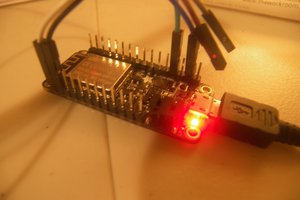Concept Video:
The idea is that the remote is connected to your HTPC or media player via BLE. It will also have IR to be able to do all the other usual universal remote stuff like macros and learning. Community supplied IR codes will hopefully play a big part and I'd like to get a good collection of them that can be useful in other projects, perhaps Lirc will help get me started.
An screen should show you the current status of the media you're playing and other useful info.
The remote will be made up of a BLE radio and ARM microcontroller (either as a single chip solution or as seperate chips), some buttons, an LCD (possibly a sharp memory LCD or eInk), most likely a low power MEMS accelerometer, possibly a gyroscope and a magnetic compass.
But most of all (I like the way you move?), it should be extendable, hackable, configurable. Add 433Mhz to control your remote control outlets or 868Mhz to show when your doorbell is pressed. Wire in a 27Mhz module and control that old RC car.
I think a touchpad might be quite useful, or perhaps a query keyboard. It probably won't be possible to design a nice looking remote with a querty keyboard, touchpad, LCD and well-laid out navigation buttons. I'd like to see examples of nice remote in the comments.
I realise that you can do most of this with mobile apps these days. But I hate having to unlock my phone and load up an app just to control the TV and its no good for guests and family members. WAF (Wife/Significant-other acceptance factor) and ease of use by children is a requirement here.
I want people to be able to develop/hack on this without shelling out for development kits or expensive software, which will be difficult given the available BLE modules, but I'll explore the options in another post.
The last thing on the 'todo' list is BLE to IR repeaters. For people that have their AV equiptment locked away in a cabinet, the coin-cell sized/powered device would be able to relay IR signals sent to it over BLE by the remote. Also from mobile apps I guess.
The 'stretch' goal for this project is a BLE internet gateway. A device with Wi-Fi/Ethernet and BLE. The remote could then, talk to any network device even when your Media PC is off. The gateway could be useful for further open home automation devices using BLE too.
Here's my basic system diagram
 jacksonliam
jacksonliam




 Alexander
Alexander
 neohackerjd
neohackerjd

 Boz
Boz
Flexible PLA is absolutely on my todo list! If not for the actual domes themselves to give a better feel to the buttons. you can rea here : https://remotecodesguide.com/universal-remote-codes/